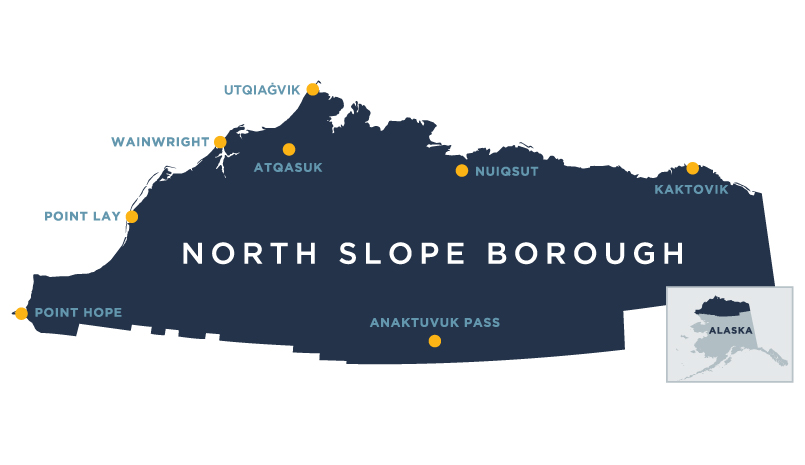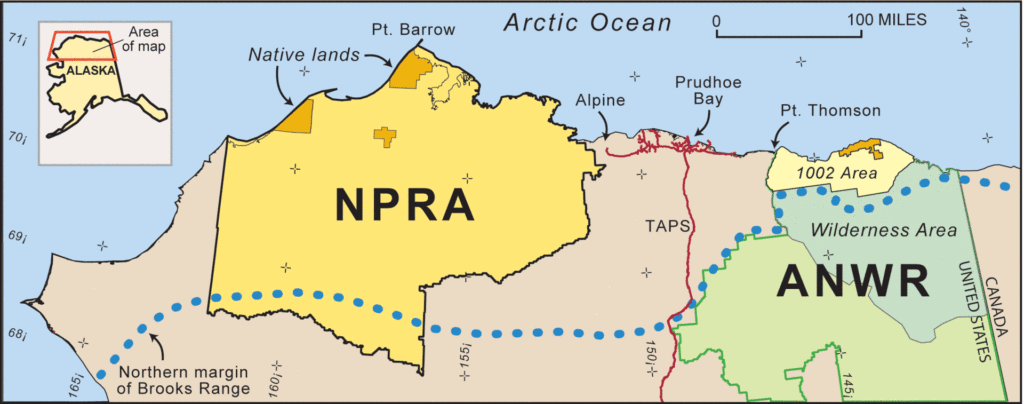Life at the top of the world is much different than in the Lower 48.
The Iñupiat have lived on Alaska’s remote North Slope for thousands of years. Our region’s combined land and sea area of nearly 95,000 square miles, roughly the size of Minnesota, is home to over 10,000 North Slope residents.

Over the past 10,00 years, we have used and occupied the lands and waters of the North Slope, frequently moving from location to location in pursuit of seasonal wildlife. The North Slope Iñupiat includes the Taġiuġmiut, the “people of the sea,” who live and use the resources of both land and marine mammals for food and materials, and the Nunamiut, the “people of the land,” who depend on the resources of the caribou and other land mammals for food and materials.
These ancestral homelands include what is now known as the National Petroleum Reserve in Alaska (NPR-A), the Arctic National Wildlife Refuge (ANWR) and Gates of the Arctic National Park and Preserve, leaving the North Slope Iñupiat almost completely within or adjacent to federally selected areas. The North Slope Iñupiat are the only people that occupy both the NPR-A and ANWR, areas taken by the federal government without concern for our people.
A 1977 study found nearly 450 traditional Iñupiaq land use sites in these areas, but we have long used these federally managed lands for our traditional subsistence hunting and gathering practices.

Today, the North Slope Iñupiat have settled in eight communities dotting the North Slope’s geographical expanse, with no permanent road system to connect the communities. With only one person per 6,400 acres, one of the lowest population densities in the U.S., we depend on our communities and each other not just to survive — but to thrive in the North Slope’s unforgiving environment.
Our communities lived in third world conditions until only a generation ago, with an average life expectation of only 34 years in 1969. We lived without modern water and sewer systems, permanent brick and mortar homes, and many of the other modern amenities ubiquitous to the Lower 48.

Our ancestral homelands are rich in natural resources, including fish, wildlife, energy reserves, and rare earth minerals. We work to ensure the future of our culture by supporting renewable resources and passing down traditional subsistence knowledge, like hunting and fishing techniques, from generation to generation. Our subsistence practices are an essential tool for families to feed themselves in a region where a single gallon of milk can cost nearly three times as much as it does in the Lower 48. Or, as we like to say, $100 in fuel and ammunition for subsistence activities will feed your family for months and provide materials for traditional clothing, arts, and crafts, whereas that same $100 might only feed your family for a single meal.
Hunting and fishing are not simply hobbies for the North Slope Iñupiat. They have sustained our culture for millennia and continue to do so today. Having an economy to utilize modern tools to access our resources is key to ensuring our culture into the future.
We invite you to learn more about our unique region and what life is like at the top of the world.
About the North Slope
More information on the history of the North Slope Iñupiat, the North Slope Borough, and what life is like in America’s northernmost region.
About the North Slope’s Economy
These resources offer a glimpse into the North Slope’s economy.
- Background: Major Issues Related to Oil and Gas Activities
- Oil and Gas Activity
- Natural Resources Revenue Data: the North Slope Borough
About the North Slope’s Communities
Learn more about the eight villages that make up the North Slope.
About VOICE
VOICE was established in 2015 by the region’s collective elected Iñupiat leadership to educate Americans about our people and speak with a unified voice on issues impacting our communities, our economy, and our culture.